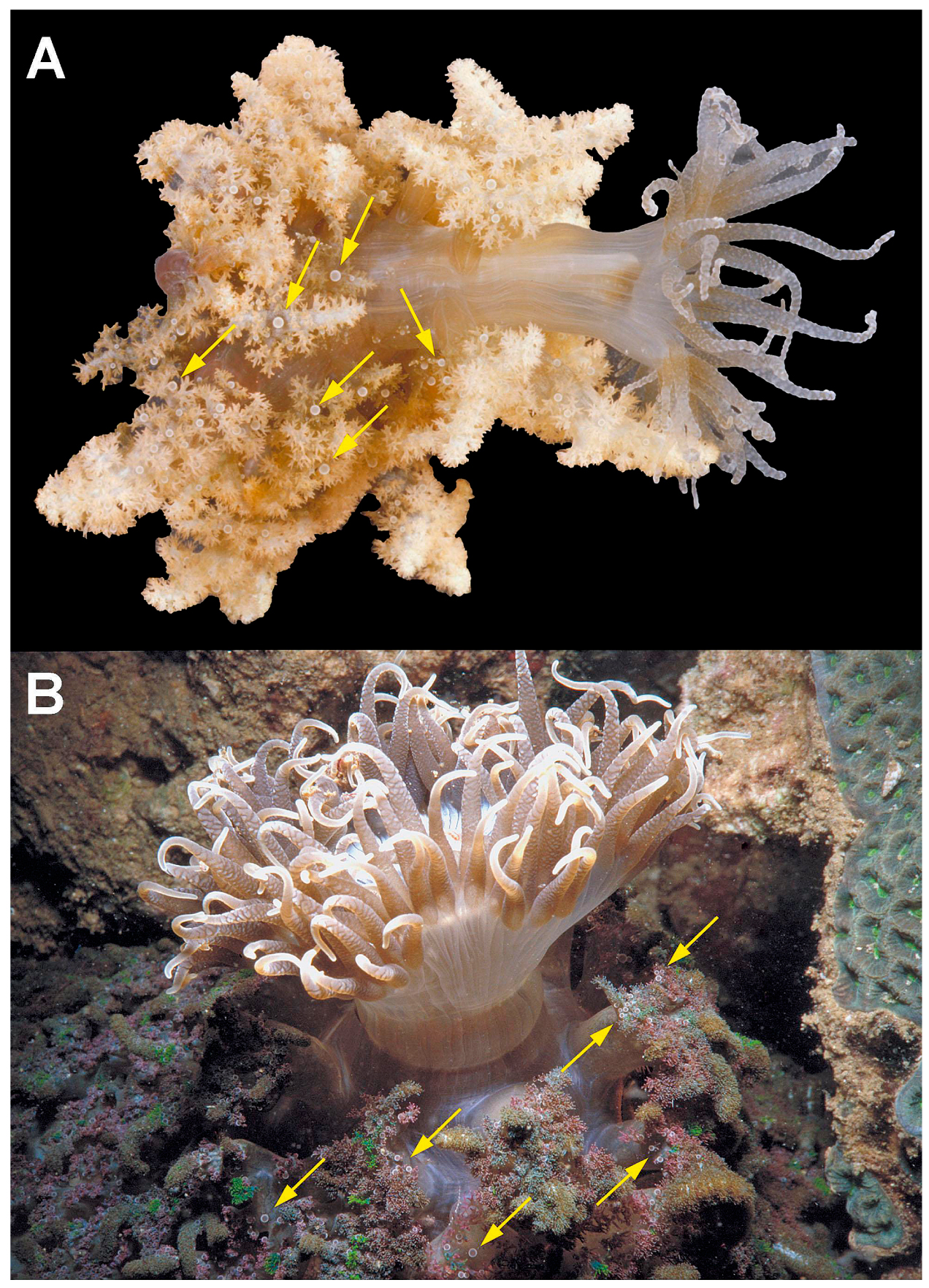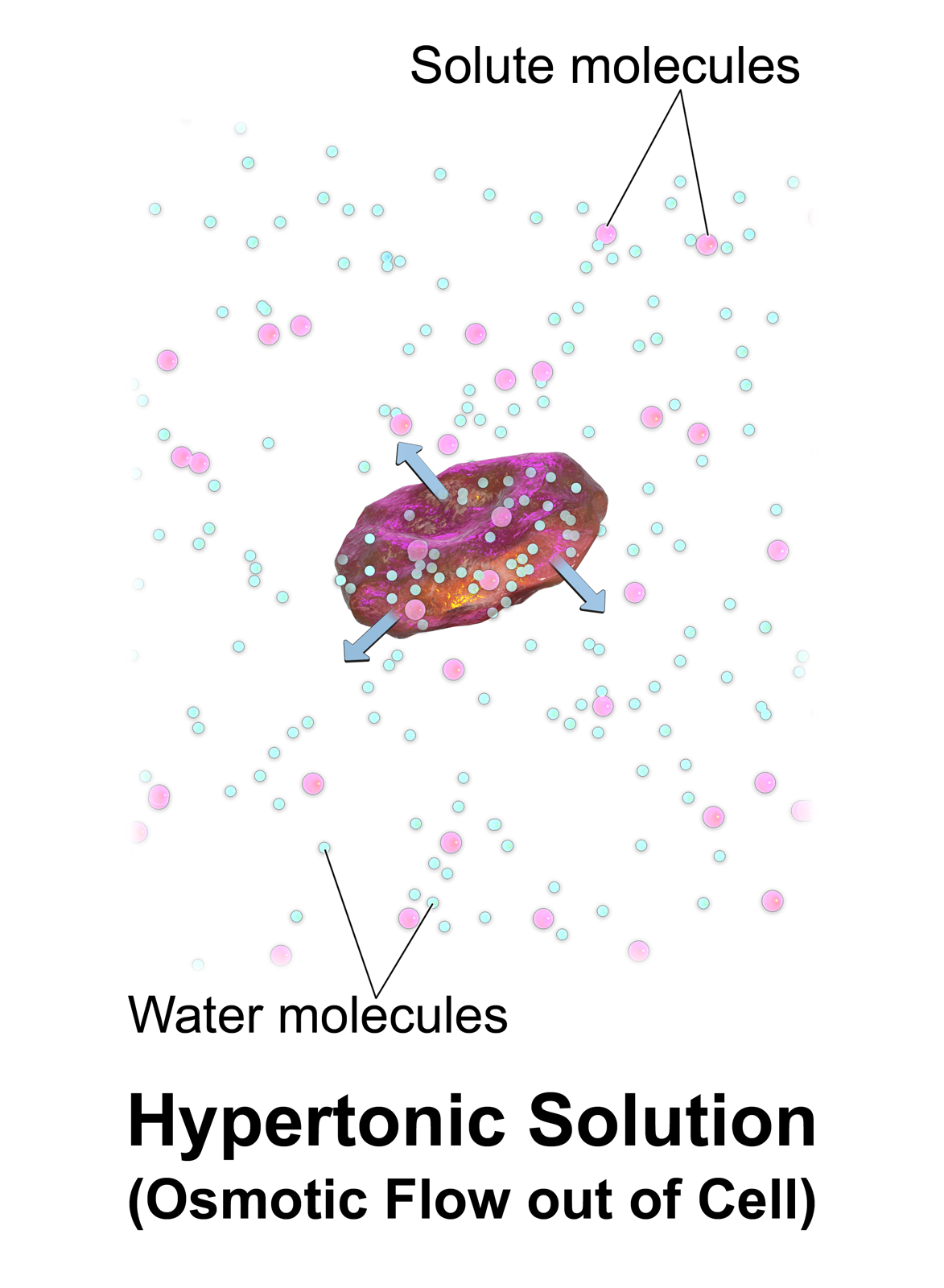|
Phyllodiscus Semoni1
''Phyllodiscus'' is a monotypic genus of sea anemones in the Family (Biology), family Aliciidae. The only species is ''Phyllodiscus semoni'', commonly known as the night anemone, which is native to shallow seas in the central Indo-West Pacific, such as Indonesia, the Philippines and southern Japan. It is venomous and can cause a painful, long-lasting sting to humans. It is called ''unbachi-isoginchaku'' in Japanese language, Japanese which translates as "wasp-sea anemone". Description ''Phyllodiscus semoni'' has a broad basal disc attached to the Substrate (biology), substrate. The lower portion of the column is smooth and the middle section has a radially arranged series of pseudo-tentacles, thick, stalked and branched outgrowths which show great variety in their appearance between different individuals. There are a number of hemispherical vesicles on the branches, and occasionally on the stalks. These contain nematocysts containing short and long-shafted stinging threads. The up ... [...More Info...] [...Related Items...] OR: [Wikipedia] [Google] [Baidu] |
Holotype
A holotype is a single physical example (or illustration) of an organism, known to have been used when the species (or lower-ranked taxon) was formally described. It is either the single such physical example (or illustration) or one of several examples, but explicitly designated as the holotype. Under the International Code of Zoological Nomenclature (ICZN), a holotype is one of several kinds of name-bearing types. In the International Code of Nomenclature for algae, fungi, and plants (ICN) and ICZN, the definitions of types are similar in intent but not identical in terminology or underlying concept. For example, the holotype for the butterfly '' Plebejus idas longinus'' is a preserved specimen of that subspecies, held by the Museum of Comparative Zoology at Harvard University. In botany, an isotype is a duplicate of the holotype, where holotype and isotypes are often pieces from the same individual plant or samples from the same gathering. A holotype is not necessarily "typ ... [...More Info...] [...Related Items...] OR: [Wikipedia] [Google] [Baidu] |
Camouflage
Camouflage is the use of any combination of materials, coloration, or illumination for concealment, either by making animals or objects hard to see, or by disguising them as something else. Examples include the leopard's spotted coat, the battledress of a modern soldier, and the leaf-mimic katydid's wings. A third approach, motion dazzle, confuses the observer with a conspicuous pattern, making the object visible but momentarily harder to locate, as well as making general aiming easier. The majority of camouflage methods aim for crypsis, often through a general resemblance to the background, high contrast disruptive coloration, eliminating shadow, and countershading. In the open ocean, where there is no background, the principal methods of camouflage are transparency, silvering, and countershading, while the ability to produce light is among other things used for counter-illumination on the undersides of cephalopods such as squid. Some animals, such as chameleons and o ... [...More Info...] [...Related Items...] OR: [Wikipedia] [Google] [Baidu] |
Haemolysis
Hemolysis or haemolysis (), also known by several other names, is the rupturing (lysis) of red blood cells (erythrocytes) and the release of their contents (cytoplasm) into surrounding fluid (e.g. blood plasma). Hemolysis may occur in vivo or in vitro. One cause of hemolysis is the action of hemolysins, toxins that are produced by certain pathogenic bacteria or fungi. Another cause is intense physical exercise. Hemolysins damage the red blood cell's cytoplasmic membrane, causing lysis and eventually cell death. Etymology From hemo- + -lysis, from , "blood") + , "loosening"). Inside the body Hemolysis inside the body can be caused by a large number of medical conditions, including some parasites (''e.g.'', ''Plasmodium''), some autoimmune disorders (''e.g.'', autoimmune haemolytic anaemia, drug-induced hemolytic anemia, atypical hemolytic uremic syndrome (aHUS)), some genetic disorders (''e.g.'', Sickle-cell disease or G6PD deficiency), or blood with too low a solute conce ... [...More Info...] [...Related Items...] OR: [Wikipedia] [Google] [Baidu] |
Dermatitis
Dermatitis is inflammation of the skin, typically characterized by itchiness, redness and a rash. In cases of short duration, there may be small blisters, while in long-term cases the skin may become thickened. The area of skin involved can vary from small to covering the entire body. Dermatitis is often called eczema, and the difference between those terms is not standardized. The exact cause of the condition is often unclear. Cases may involve a combination of allergy and poor venous return. The type of dermatitis is generally determined by the person's history and the location of the rash. For example, irritant dermatitis often occurs on the hands of those who frequently get them wet. Allergic contact dermatitis occurs upon exposure to an allergen, causing a hypersensitivity reaction in the skin. Prevention of atopic dermatitis is typically with essential fatty acids, and may be treated with moisturizers and steroid creams. The steroid creams should generally be of mid ... [...More Info...] [...Related Items...] OR: [Wikipedia] [Google] [Baidu] |
Red Blood Cell
Red blood cells (RBCs), also referred to as red cells, red blood corpuscles (in humans or other animals not having nucleus in red blood cells), haematids, erythroid cells or erythrocytes (from Greek ''erythros'' for "red" and ''kytos'' for "hollow vessel", with ''-cyte'' translated as "cell" in modern usage), are the most common type of blood cell and the vertebrate's principal means of delivering oxygen (O2) to the body tissues—via blood flow through the circulatory system. RBCs take up oxygen in the lungs, or in fish the gills, and release it into tissues while squeezing through the body's capillaries. The cytoplasm of a red blood cell is rich in hemoglobin, an iron-containing biomolecule that can bind oxygen and is responsible for the red color of the cells and the blood. Each human red blood cell contains approximately 270 million hemoglobin molecules. The cell membrane is composed of proteins and lipids, and this structure provides properties essential for physiolo ... [...More Info...] [...Related Items...] OR: [Wikipedia] [Google] [Baidu] |
Hemolysis
Hemolysis or haemolysis (), also known by several other names, is the rupturing (lysis) of red blood cells (erythrocytes) and the release of their contents (cytoplasm) into surrounding fluid (e.g. blood plasma). Hemolysis may occur in vivo or in vitro. One cause of hemolysis is the action of hemolysins, toxins that are produced by certain pathogenic bacteria or fungi. Another cause is intense physical exercise. Hemolysins damage the red blood cell's cytoplasmic membrane, causing lysis and eventually cell death. Etymology From hemo- + -lysis, from , "blood") + , "loosening"). Inside the body Hemolysis inside the body can be caused by a large number of medical conditions, including some parasites (''e.g.'', ''Plasmodium''), some autoimmune disorders (''e.g.'', autoimmune haemolytic anaemia, drug-induced hemolytic anemia, atypical hemolytic uremic syndrome (aHUS)), some genetic disorders (''e.g.'', Sickle-cell disease or G6PD deficiency), or blood with too low a solute conc ... [...More Info...] [...Related Items...] OR: [Wikipedia] [Google] [Baidu] |
Palaemon Paucidens
''Palaemon paucidens'' is a species of shrimp of the family Palaemonidae. It is found in rivers on the Korean Peninsula Korea ( ko, 한국, or , ) is a peninsular region in East Asia. Since 1945, it has been divided at or near the 38th parallel, with North Korea (Democratic People's Republic of Korea) comprising its northern half and South Korea (Republic o ... and in Japan. References Palaemonidae Crustaceans described in 1844 {{Caridea-stub ... [...More Info...] [...Related Items...] OR: [Wikipedia] [Google] [Baidu] |
Invertebrate
Invertebrates are a paraphyletic group of animals that neither possess nor develop a vertebral column (commonly known as a ''backbone'' or ''spine''), derived from the notochord. This is a grouping including all animals apart from the chordate subphylum Vertebrata. Familiar examples of invertebrates include arthropods, mollusks, annelids, echinoderms and cnidarians. The majority of animal species are invertebrates; one estimate puts the figure at 97%. Many invertebrate taxa have a greater number and variety of species than the entire subphylum of Vertebrata. Invertebrates vary widely in size, from 50 μm (0.002 in) rotifers to the 9–10 m (30–33 ft) colossal squid. Some so-called invertebrates, such as the Tunicata and Cephalochordata, are more closely related to vertebrates than to other invertebrates. This makes the invertebrates paraphyletic, so the term has little meaning in taxonomy. Etymology The word "invertebrate" comes from the Latin word ''vertebra'', whi ... [...More Info...] [...Related Items...] OR: [Wikipedia] [Google] [Baidu] |
Zooplankton
Zooplankton are the animal component of the planktonic community ("zoo" comes from the Greek word for ''animal''). Plankton are aquatic organisms that are unable to swim effectively against currents, and consequently drift or are carried along by currents in the ocean, or by currents in seas, lakes or rivers. Zooplankton can be contrasted with phytoplankton, which are the plant component of the plankton community ("phyto" comes from the Greek word for ''plant''). Zooplankton are heterotrophic (other-feeding), whereas phytoplankton are autotrophic (self-feeding). This means zooplankton cannot manufacture their own food but must eat other plants or animals instead — in particular they eat phytoplankton. Zooplankton are generally larger than phytoplankton, most are microscopic, but some (such as jellyfish) are macroscopic and can be seen with the naked eye. Many protozoans (single-celled protists that prey on other microscopic life) are zooplankton, including zooflagellates, fo ... [...More Info...] [...Related Items...] OR: [Wikipedia] [Google] [Baidu] |
Dinoflagellate
The dinoflagellates (Greek δῖνος ''dinos'' "whirling" and Latin ''flagellum'' "whip, scourge") are a monophyletic group of single-celled eukaryotes constituting the phylum Dinoflagellata and are usually considered algae. Dinoflagellates are mostly marine plankton, but they also are common in freshwater habitats. Their populations vary with sea surface temperature, salinity, and depth. Many dinoflagellates are photosynthetic, but a large fraction of these are in fact mixotrophic, combining photosynthesis with ingestion of prey (phagotrophy and myzocytosis). In terms of number of species, dinoflagellates are one of the largest groups of marine eukaryotes, although substantially smaller than diatoms. Some species are endosymbionts of marine animals and play an important part in the biology of coral reefs. Other dinoflagellates are unpigmented predators on other protozoa, and a few forms are parasitic (for example, ''Oodinium'' and ''Pfiesteria''). Some dinoflagellates pro ... [...More Info...] [...Related Items...] OR: [Wikipedia] [Google] [Baidu] |
Symbiotic
Symbiosis (from Greek , , "living together", from , , "together", and , bíōsis, "living") is any type of a close and long-term biological interaction between two different biological organisms, be it mutualistic, commensalistic, or parasitic. The organisms, each termed a symbiont, must be of different species. In 1879, Heinrich Anton de Bary defined it as "the living together of unlike organisms". The term was subject to a century-long debate about whether it should specifically denote mutualism, as in lichens. Biologists have now abandoned that restriction. Symbiosis can be obligatory, which means that one or more of the symbionts depend on each other for survival, or facultative (optional), when they can generally live independently. Symbiosis is also classified by physical attachment. When symbionts form a single body it is called conjunctive symbiosis, while all other arrangements are called disjunctive symbiosis."symbiosis." Dorland's Illustrated Medical Dictionary. ... [...More Info...] [...Related Items...] OR: [Wikipedia] [Google] [Baidu] |
Symbiodinium
: ''This is about the genus sometimes called Zoox. For the company, see Zoox (company)'' ''Symbiodinium'' is a genus of dinoflagellates that encompasses the largest and most prevalent group of endosymbiotic dinoflagellates known. These unicellular microalgae commonly reside in the endoderm of tropical cnidarians such as corals, sea anemones, and jellyfish, where the products of their photosynthetic processing are exchanged in the host for inorganic molecules. They are also harbored by various species of demosponges, flatworms, mollusks such as the giant clams, foraminifera ( soritids), and some ciliates. Generally, these dinoflagellates enter the host cell through phagocytosis, persist as intracellular symbionts, reproduce, and disperse to the environment. The exception is in most mollusks, where these symbionts are intercellular (between the cells). Cnidarians that are associated with ''Symbiodinium'' occur mostly in warm oligotrophic (nutrient-poor), marine environments where ... [...More Info...] [...Related Items...] OR: [Wikipedia] [Google] [Baidu] |









